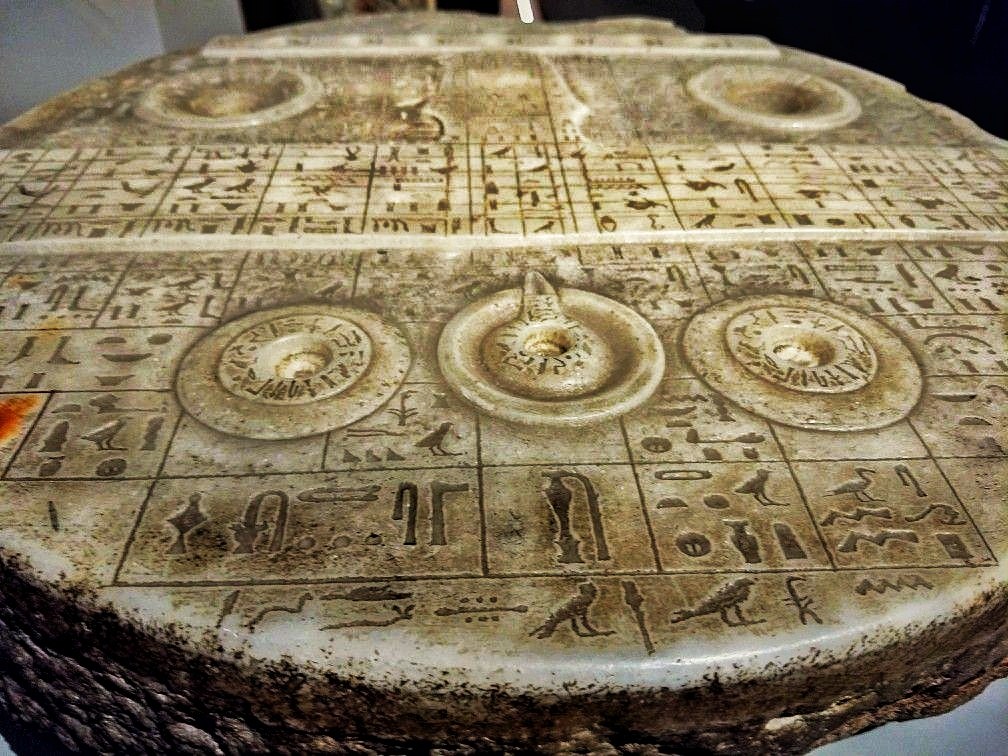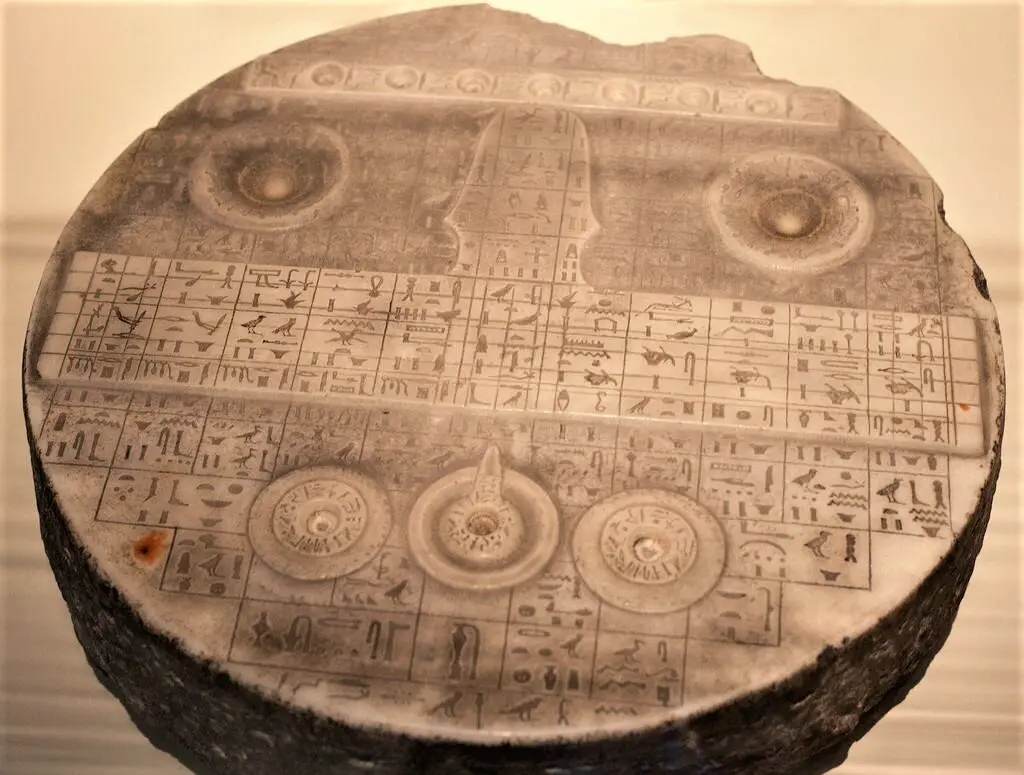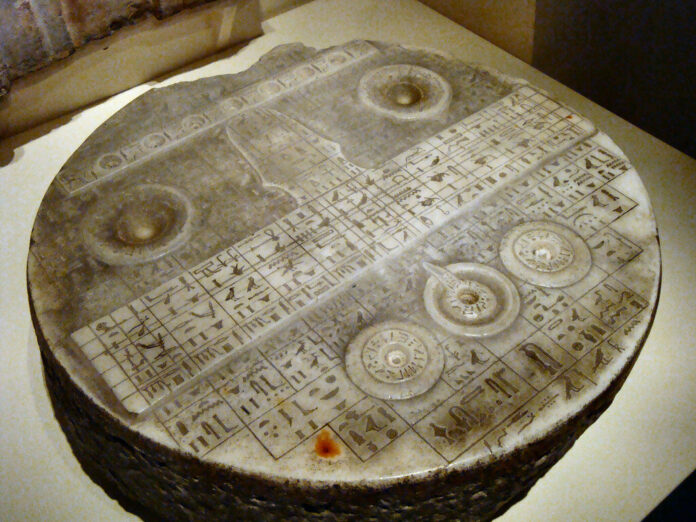In the world of ancient Egyptian artifacts, few items capture the imagination as vividly as the round ‘offering table of Defdji.’ This remarkable piece stands out not only for its unique shape but also for its intricate design, reminiscent of a modern aircraft control panel. Dating back to 2200 BC, this alabaster table provides a fascinating glimpse into the religious and ceremonial practices of ancient Egypt. Currently housed in the Leiden Museum of Antiquities (Rijksmuseum van Ouheden) in the Netherlands, the offering table of Defdji is a testament to the craftsmanship and spiritual devotion of its time.
The Unique Shape of the Offering Table

Unlike the majority of offering tables, which are typically rectangular, the offering table of Defdji is round. This deviation from the norm is a rarity in Egyptian artifacts. Often, offering tables were crafted in the shape of the hieroglyph for ‘offering,’ known as ‘hetep’ in Egyptian – symbolized by a reed mat with a loaf of bread on it. The round shape of Defdji’s table, combined with its extraordinary detail, sets it apart as a significant piece in the study of ancient Egyptian culture.
The Significance of Defdji
Defdji, the official for whom the table was made, held several prestigious titles, including ‘Acquaintance of the King, Highly Revered by the Great God, Unique Friend, Great One of Upper Egypt.’ These titles reflect his high status and the respect he commanded during his lifetime. The offering table, therefore, was not just a ceremonial object but also a symbol of Defdji’s prominence and reverence.
Detailed Design and Composition

The offering table is crafted from white alabaster and is 13 cm thick. Central to its design is the hetep sign, placed in raised relief horizontally across the middle. Above this sign, two dishes are depicted, while underneath it, two small vases and a jug in a bowl are featured. The surface of the table is meticulously divided into compartments, each labeled with the name of a dish, a drink, or a purifying agent. In total, there are over ninety products represented on the table.
The Seven Sacred Oils
One of the most fascinating aspects of the offering table is the top panel, which features seven shallow cavities designed to hold consecrated oils. These oils were used to anoint the cult statue of the deceased. Each cavity is precisely named, from right to left: ‘festive ointment,’ ‘laudation oil,’ ‘balm,’ ‘nekhenem oil,’ ‘Tuawet oil,’ ‘top quality cedar oil,’ and ‘top quality Libyan oil.’ Additionally, each oil is clearly marked for its intended recipient: ‘for Defdji.’
The Legacy of the Offering Table

The offering table of Defdji, dating back to 2200 BC, remains an invaluable artifact that offers insight into the religious practices and daily life of ancient Egypt. Its detailed craftsmanship and unique design continue to intrigue historians and archaeologists, providing a deeper understanding of the civilization’s complexity and sophistication.
Conclusion
The round offering table of Defdji is not just an artifact; it is a window into the past, revealing the intricate rituals and high esteem in which individuals like Defdji were held. Its resemblance to a modern aircraft control panel adds an element of mystery and fascination, bridging the gap between ancient and contemporary technological perceptions. As it resides in the Leiden Museum of Antiquities, this extraordinary offering table continues to captivate and educate those who encounter its intricate design and rich history.
